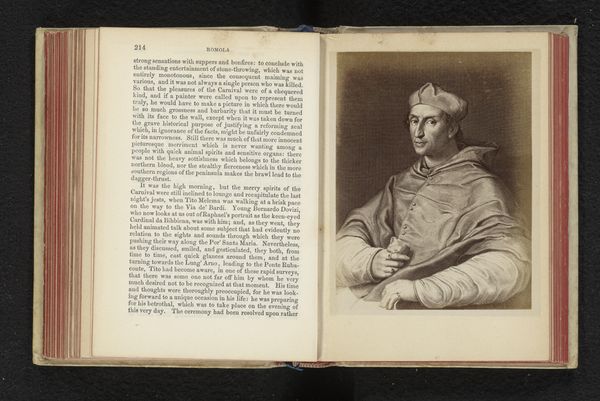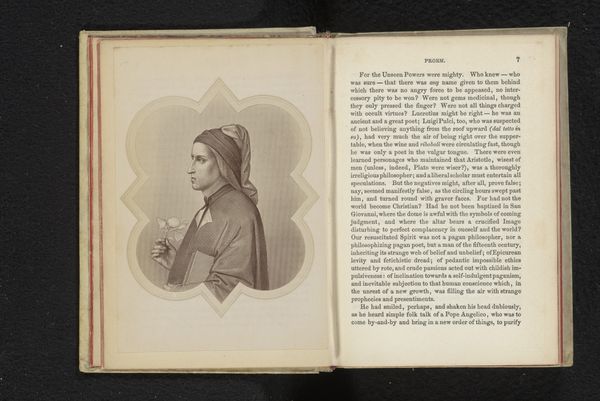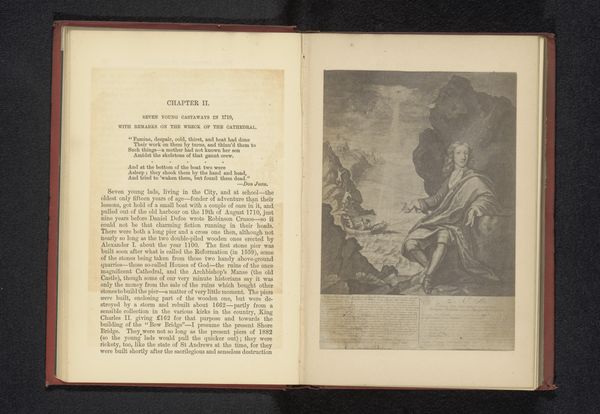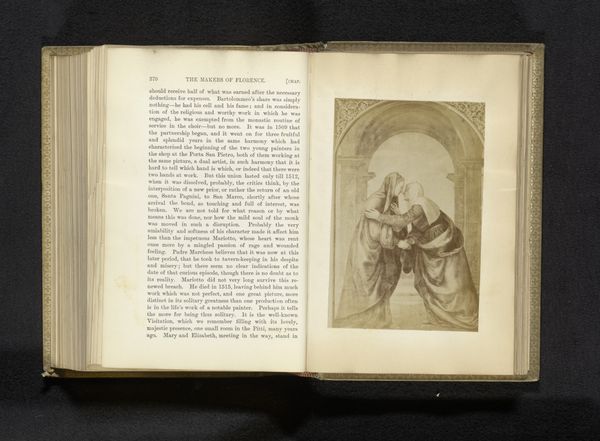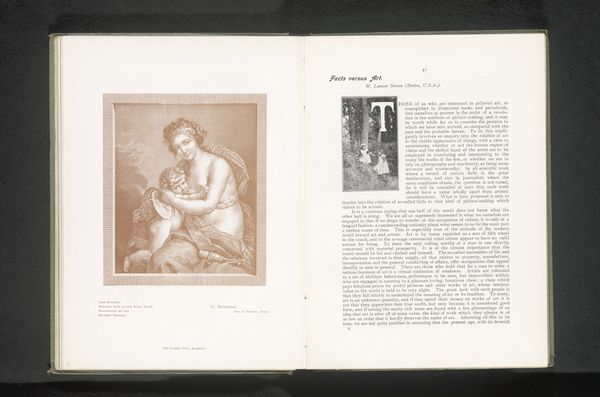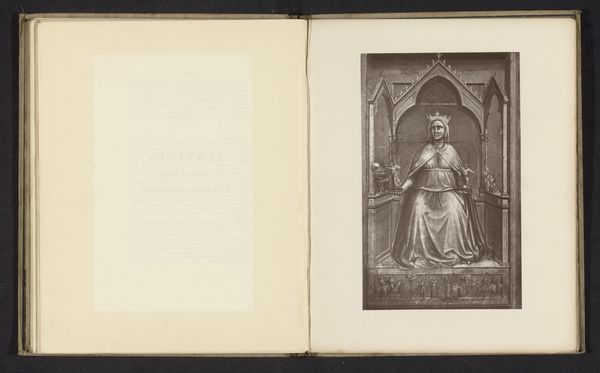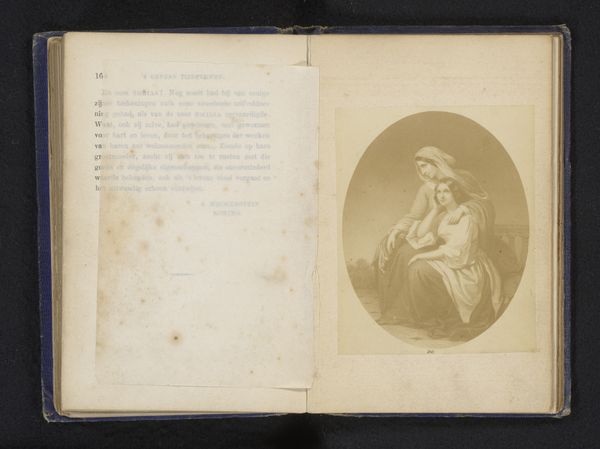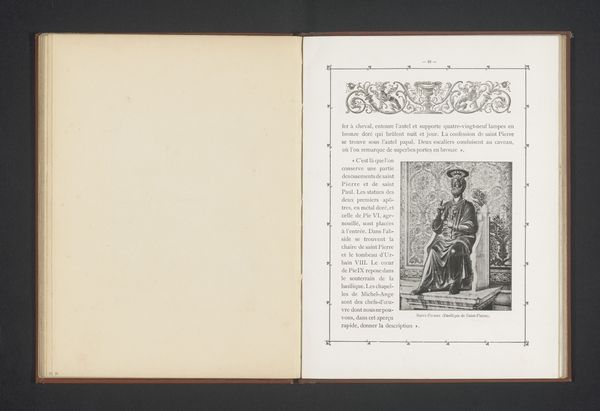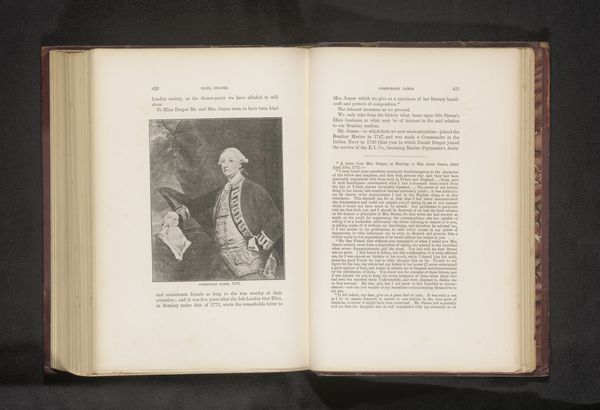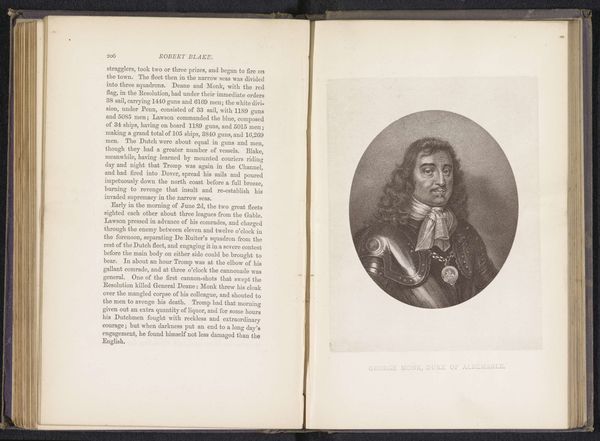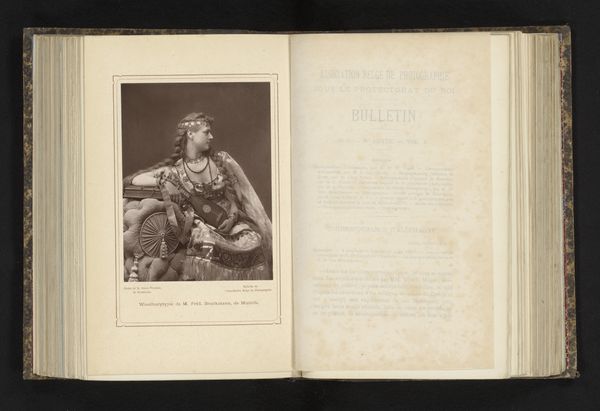
Fotoreproductie van een prent van een portret van een onbekende man, mogelijk Bartolommeo Scala, mogelijk naar een schilderij before 1863
0:00
0:00
print, engraving
#
portrait
# print
#
book
#
italian-renaissance
#
engraving
Dimensions: height 137 mm, width 98 mm
Copyright: Rijks Museum: Open Domain
Curator: We're looking at a photographic reproduction of a print, before 1863, showing a portrait of an unknown man. It's suggested it could be Bartolommeo Scala, or a depiction after a painting of him, by Giacomo Brogi. The print style itself evokes the Italian Renaissance, emphasizing that cultural memory and period, and also reproduced in book form alongside text. What strikes you about it? Editor: Immediately, I see this sense of refined power, almost intimidating. The profile, the laurel wreath... there's an undeniably classical aspiration at play here. Is it meant to conjure specific cultural or political associations through those details? Curator: Absolutely. The laurel wreath is of course strongly symbolic – in antiquity, it indicated victory and honor, often associated with intellectual or artistic achievement, and more closely connected with the god Apollo. It implies here, not just status, but intellectual prowess. How do you think that plays into how we read the figure? Editor: Given that it is placed in a book that includes other text, it almost presents an image of intellectual elitism or access only for some – consider what role those attributes play in structures of power. This reproduction isn't simply a portrait; it’s about shaping an idea, or disseminating a belief of power during the Italian Renaissance and onward. The image then becomes a carrier of those ideas as the book containing the photograph becomes available to viewers. Curator: Interesting. He also holds what looks like a closed book. This could indicate his literary association but hides the actual contents. Consider the historical role of books and knowledge, and who controlled them. What meanings would audiences then be drawn to or aware of during this image reproduction? Editor: That's it precisely! The closed book is less about knowledge freely available and more about knowledge controlled, protected. A kind of elite exclusivity— and that intersects with questions of class, privilege, and who gets to write or be written about in history, influencing our current and cultural beliefs. Curator: So, while the photograph gives this figure an air of timeless wisdom and eminence through various symbols, your lens pulls in a critical awareness of who gets represented. The reproduction is of course very faint, faded, as if looking back on old histories that might get overlooked by its intended and present day viewers. Editor: Exactly. It forces us to question who that constructed 'greatness' actually serves. I think what is being memorialized can lead to very fruitful conversation with art history when the questions we ask come from the present, given the social structures then and the contemporary reproductions.
Comments
No comments
Be the first to comment and join the conversation on the ultimate creative platform.

